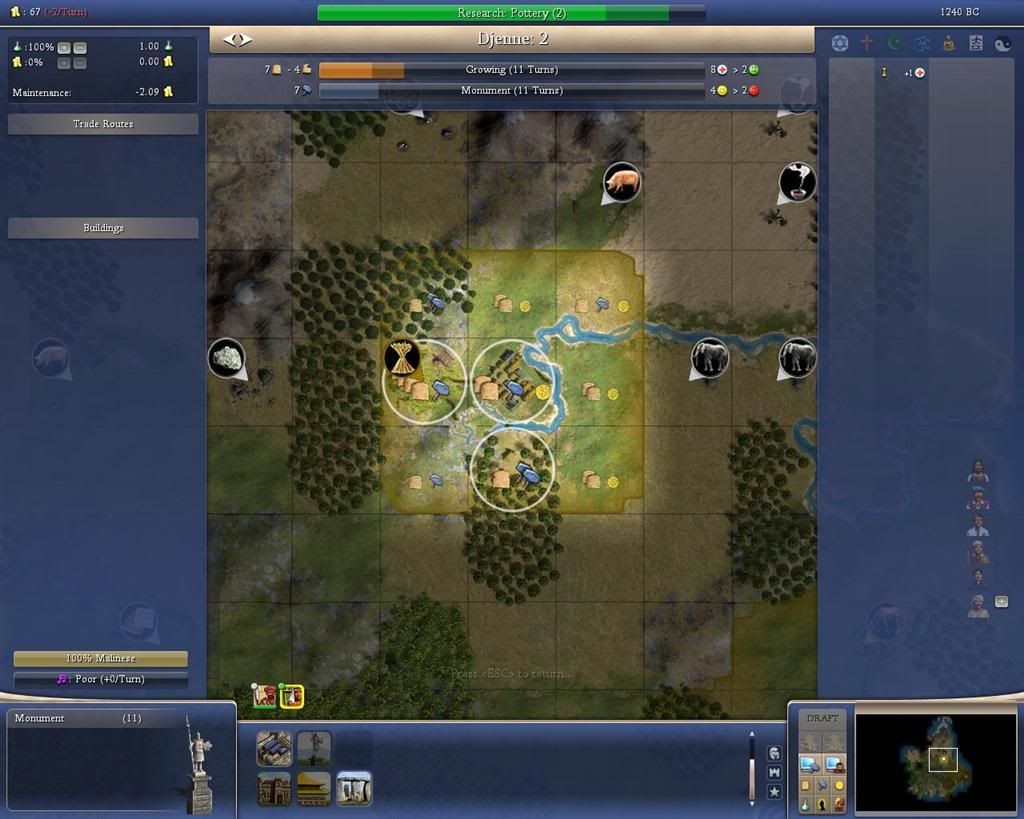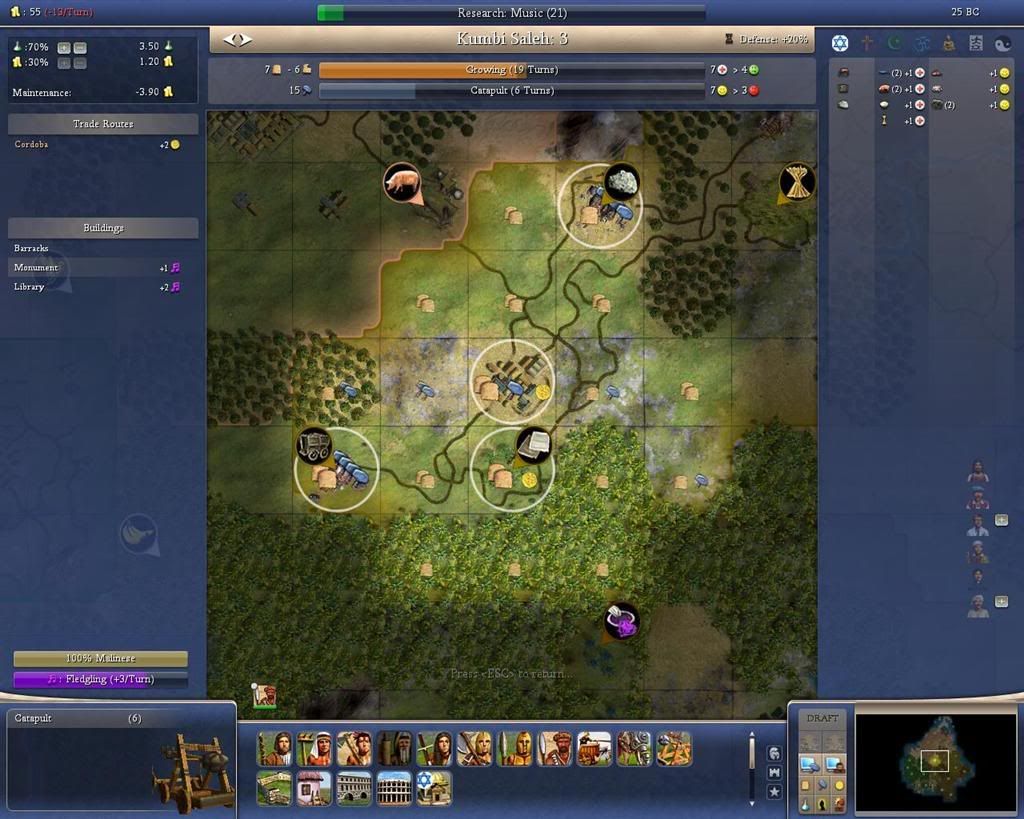I was playing a game earlier and I found I was getting somewhat confused on what to build on certain tiles. All my cities ended up being around a river. I was building a few farms along the river because it had extra food, and I was saving the non-water area for cottages... Is this what I should be doing? I found if I built too many cottages my cities would not grow at all. I can get a production city rolling pretty good, but the others i'm not too sure.
I would like to see a tutorial or maybe a map with some tiles built up to see what is ideal.
Well, here's an example of a pretty good (though not stellar) commerce city in its very early life in my current ALC game.
First off, this city is right next to a river, so it immediately gets a +2 health bonus from access to fresh water. (I built it before I knew that iron was 3 tiles north, otherwise I would have built it 1 tile N--though that would have given me two useless peaks in the fat cross, and I had another source of iron; see below.) One thing to notice in general is that every tile beside a river gives one extra coin or commerce. While a lot of beginners farm tiles next to rivers, and often you have no choice, you're losing out on that extra commerce. I was playing as a Financial leader, which means that as soon as I put a cottage on a riverside tile, that thing is immediately earning 3 commerce per turn. Thus, I prefer to build cottages next to rivers wherever possible, and this city has 5 riverside tiles that can take cottages: 3 grasslands, 1 plains, and one flood plain.
I can do this and still get good production out of this city because it also has an abundance of food: pigs to the north, wheat to the west. Not to mention the flood plain will produce a +1 food surplus, while the grasslands are self-sustaining (able to feed the citizens who work them). Once I obtained Civil Service, the city itself spreads irrigation to the wheat tile. That's another benefit of placing the city next to a river tile. I also look for ways to spread irrigation using plains tiles and tiles outside of any city's fat cross, which allows me to maximize the fat cross tiles for other purposes (such as cottages). Camping the ivory tile didn't suck either: 1 food, 3 hammers, and 3 commerce (again, thanks to Financial), IIRC.
I also chopped the forest 1S of the city so I could spread irrigation from there to the other plains tiles. All the hills got mined, and most of the plains tiles not adjacent to a river got farms. Once Biology came along, I was even able to put a workshop on that unirrigable plains tile 2N 1W of the city and work it (I built the Statue of Liberty here, in fact).
So with 5 excellent cottage tiles and several good production and food tiles, this city was able to grow, work the cottages to maturity, and have the hammers to produce all the commerce and science multipliers (and several other things besides).
Here's an example of a production city:
I used a Great Artist for a Great Work to steal the pigs from Isabella, then followed up with several cultural builds to hang on to them. In between, the city was able to build several other items, including military units and, eventually, the Taj Mahal. The hills were mined and, once I got Civil Service, I spread irrigation from Djenne's wheat tile (which you see to the northeast) to all the northern flat tiles. That gave me so much food that I was able to put workshops on nearly all the southern grassland tiles. While I usually like to put cottages on grassland, it was a struggle to hang on to that pig tile with culture alone; realizing I could have lost access to it, I knew I'd need to farm the northern grasslands to ensure the city would have adequate food if it lost its little piggies. Under those circumstances, it made sense to make the city focus on production. Besides, with iron, stone, no rivers, and 3 hills, production made sense.
Notice how the game provides you with enough varied tile improvements that you can generally make almost any city specialize one way or another depending on what your Workers do with the tiles. The exceptions tend to be ultra-special, one-of-a-kind cities like Great Person Farms, where food is king.

 and aren't
and aren't  or
or 

 .
.

